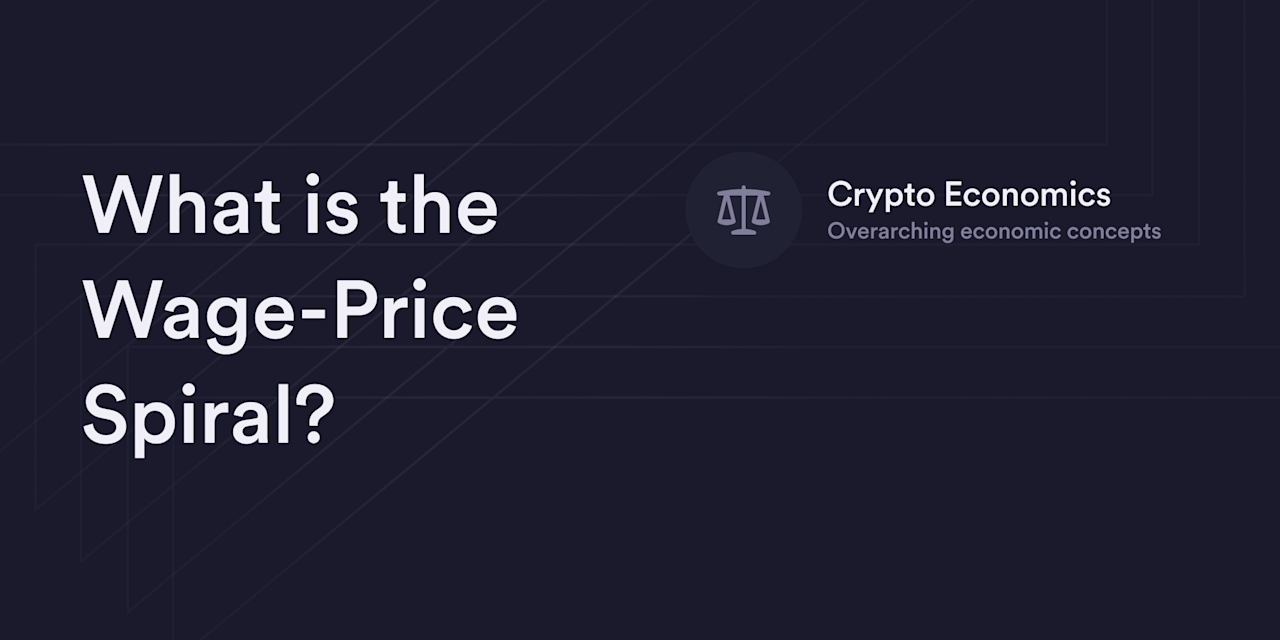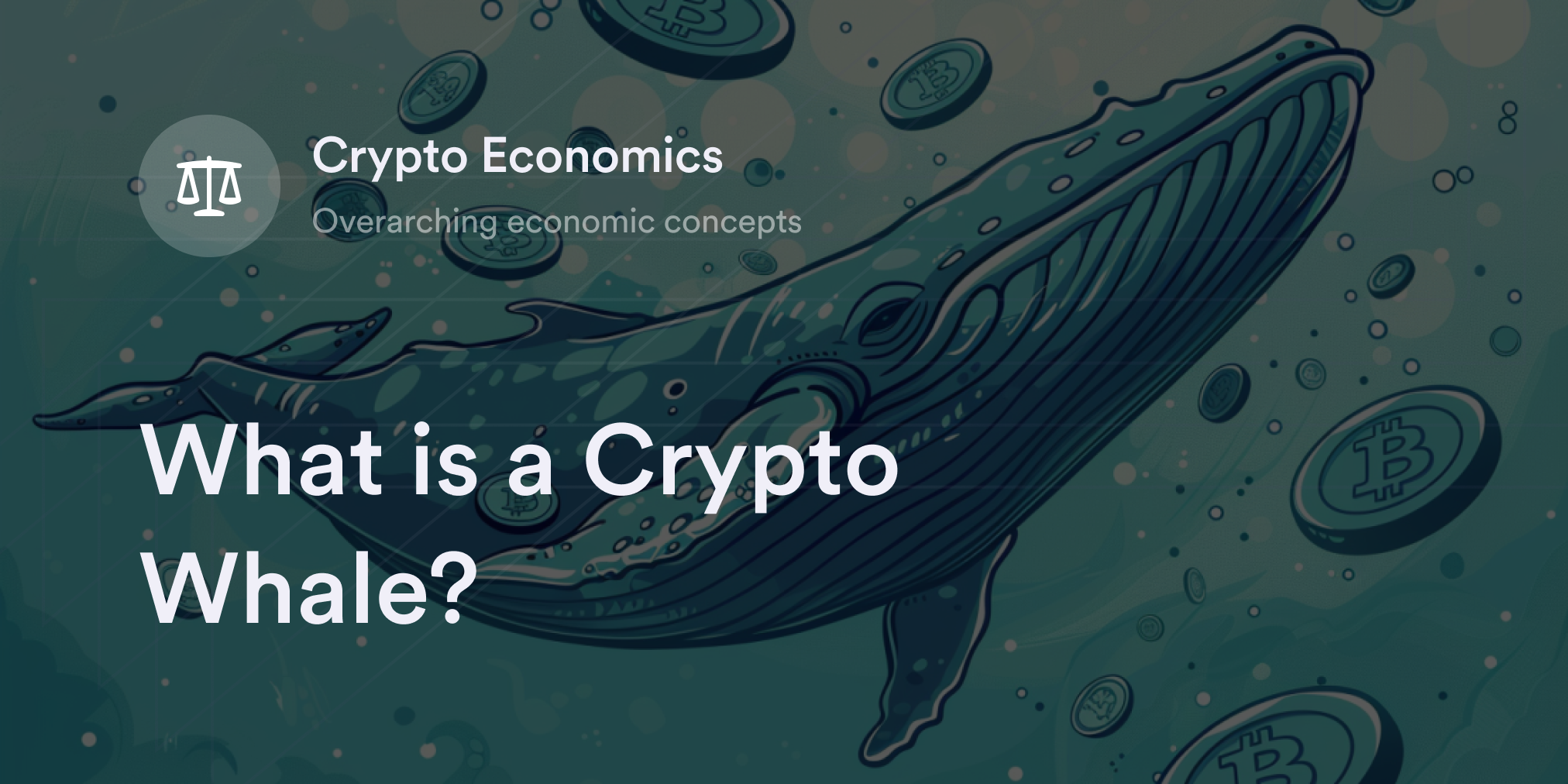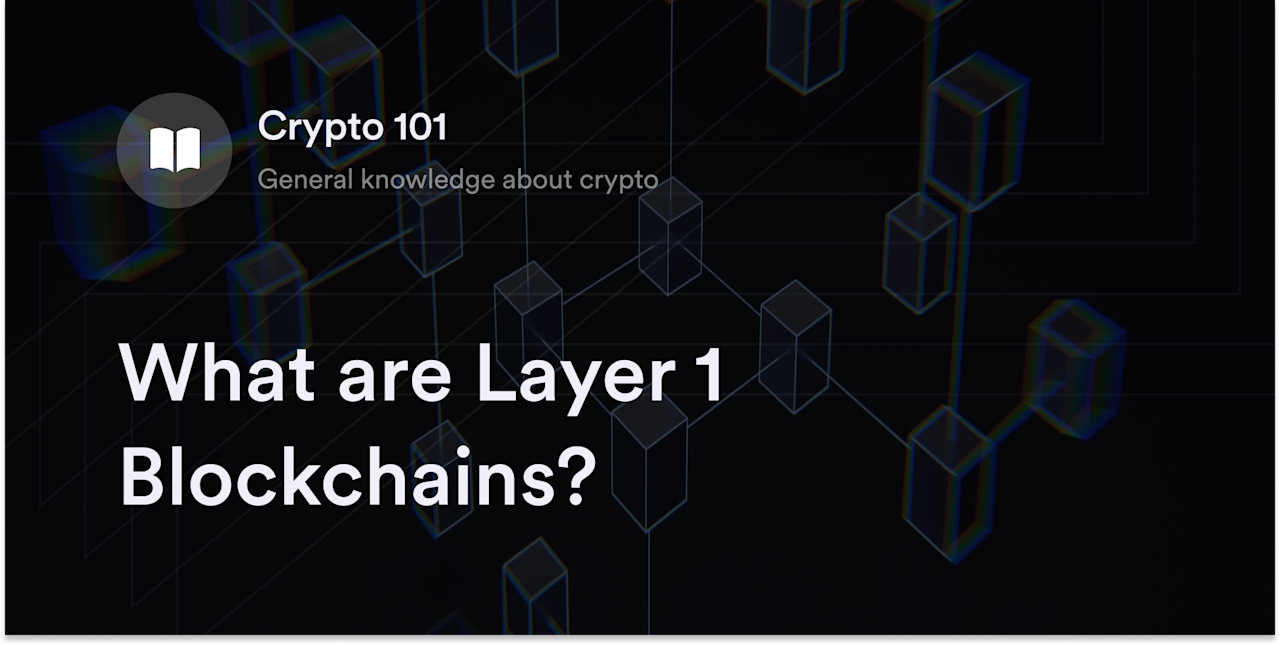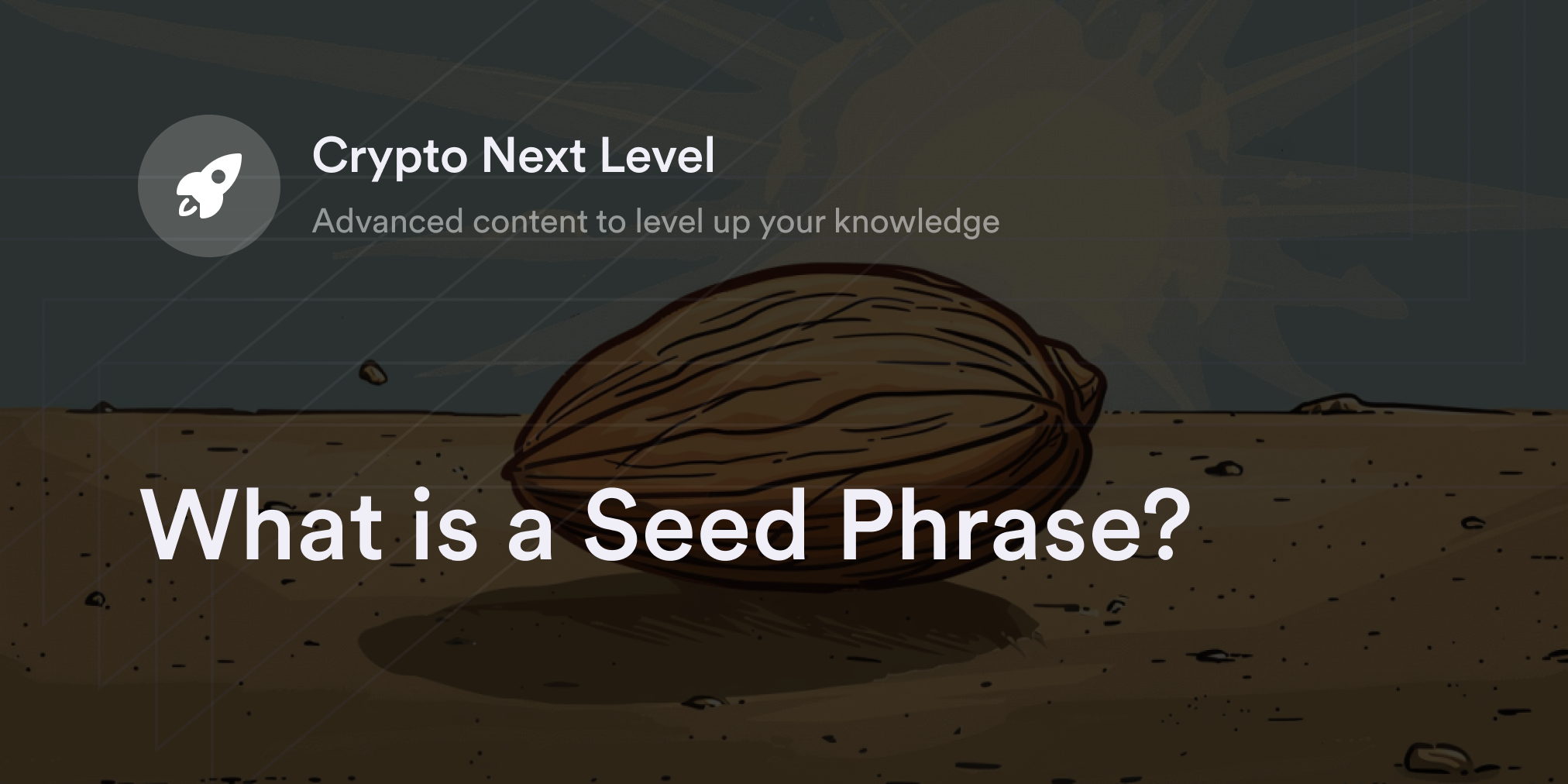
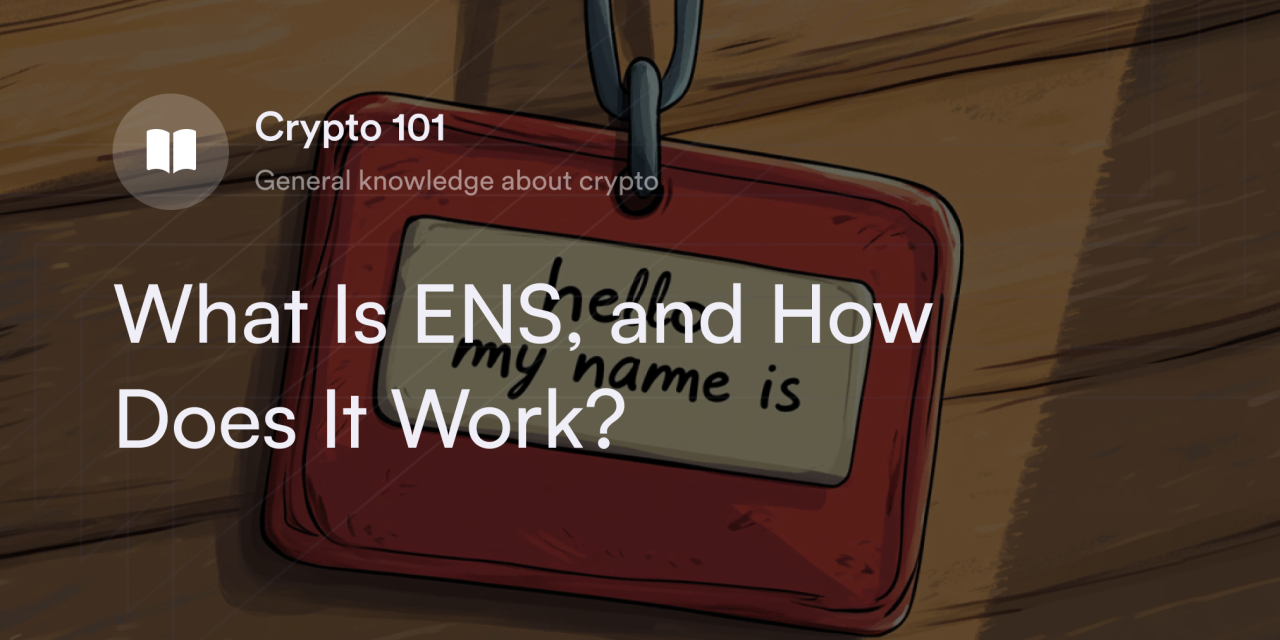

Crypto wallet addresses aren’t easy to memorize. Unless crypto traders have photographic memories, mentally recalling the jumble of letters and numbers for each wallet account is impossible. These alphanumeric strings work great for processing secure peer-to-peer (P2P) transfers, but they add a source of tension to the transaction experience. They’re difficult to read, users can’t easily share them for quick crypto payments, and minor slip-ups can result in permanently lost tokens.
To make sending crypto more user-friendly, a few projects are developing ways to make wallet addresses shorter, simpler, and easier to remember. With more than 2.8 million registered addresses in 2022, the Ethereum Name Service (ENS) is unquestionably one of the leaders in this emerging crypto niche. Let’s explore what the ENS is, how it works, and how it’s making Web3 more mainstream.
What is the Ethereum Name Service (ENS)?
The ENS is a decentralized protocol that lets users create simple, human-readable domain names for crypto wallets and other blockchain-based resources like decentralized applications (dApps), smart contracts, and websites.
Like how the Domain Name System (DNS) associates scannable website domains (e.g., Facebook.com) with IP addresses, the ENS secures and translates easy-to-read identifiers like dYdX.eth with complex blockchain accounts like 42-character Ethereum (ETH) wallet addresses.
Users with an ENS domain can link it to multiple blockchain addresses, create subdomains, and trade their ENS domains whenever they want. The native suffix for ENS domains is ".eth," but this service also works with DNS domain names like ".com" or ".org" if users who already own these domains import them onto the ENS registry.
How do ENS domains work?
The ENS uses a smart contract-based data repository called the registry to process and record ownership data for the network’s domains. To register an ENS domain, users need to buy the rights for the domain outright or place a bid if it’s up for auction. The transfer data for ENS domains is viewable on the registry and proves current ownership rights. To translate human-readable domains into machine-friendly crypto addresses, the ENS uses a smart contract technology called resolvers, which function similarly to servers in the DNS model.
The combination of a smart contract registry and resolvers allows the ENS to operate securely on the Ethereum blockchain without centralized entities. Also, each ENS domain doubles as a non-fungible token (NFT), making it easy to trade and track on the Ethereum blockchain. Unlike fungible cryptocurrencies like Bitcoin (BTC), NFTs contain unique metadata and have distinct addresses on smart contract blockchains.
DNS versus ENS: What’s the difference?
The ENS draws inspiration from the DNS’s naming procedures but relies on the decentralization of Ethereum’s blockchain rather than the DNS’s centrally controlled registration system.
In the DNS model, people who buy web domains rent their rights from centralized registrars, while those on the ENS rent domain names from an Ethereum-based decentralized protocol. When crypto traders hold an ENS domain, they have control over this metadata in an NFT until their term expires or they choose to renew.
The ENS also offers access to innovations in Web3 not available with DNS domains, including crypto transfers, dApps, and other decentralized services. Since the DNS works on more traditional Web2 applications, it primarily focuses on translating between IP addresses and human-readable domains to make internet surfing convenient.
What are ENS crypto tokens?
In November 2021, ENS developers introduced a new fungible cryptocurrency called the ENS token (ENS) to the crypto market. Anyone with an ENS domain before October 2021 could claim free ENS tokens, while the rest of these tokens went to core developers and a community treasury.
Besides rewarding early ENS adopters, ENS tokens are vital for decentralized governance on the ENS protocol. Anyone with ENS tokens can submit ideas for future improvements and vote on open proposals in the ENS’s decentralized autonomous organization (DAO). Although the date to claim airdropped ENS tokens passed, many centralized exchanges and decentralized exchanges offer ENS tokens for traders interested in participating in the ENS DAO.
To find the latest list of exchanges offering ENS tokens, search ENS on cryptocurrency price aggregator websites like CoinMarketCap and click the Markets tab to see the platforms with ENS trading pairs.
ENS registration 101: How to get an ENS domain
Registering for an ENS domain requires some tech know-how, but the intuitive ENS app helps first-time buyers search, bid, and manage their NFTs. If you’re familiar with buying NFTs or interacting with DeFi, you probably already know how to buy your first ENS domain. But if you need some guidance, here are five steps to follow:
1. Download an Ethereum crypto wallet
Since the ENS runs on the Ethereum blockchain, you’ll need an ETH-compatible crypto wallet to buy and store an ENS domain NFT. The MetaMask wallet is a free and popular browser extension, but dozens of other crypto wallets like the Coinbase Wallet, Trust Wallet, and Rainbow Wallet work on the ENS app as well. Review the accepted crypto wallets on the ENS’s official website, and download one on your phone or PC.
2. Send ETH to the crypto wallet
After setting up an Ethereum crypto wallet, buy Ether coins (ETH) through a fiat-to-crypto service built into a crypto wallet (e.g., MoonPay) or send ETH from a crypto exchange like Coinbase or Kraken to this wallet’s public ETH address. All transactions in the ENS app take place on the Ethereum network, so if you want an ENS domain, you need to pay with ETH. Also, don’t forget to check the average gas fees on the Ethereum network and factor in this additional cost.
3. Connect to the official ENS app
Next, visit app.ens.domains, click the Connect button on the top right-hand side, and choose the applicable crypto wallet to link. For example, if you have a MetaMask wallet, select the MetaMask icon and enter your password to connect your account.
4. Search for an available ENS domain and review the terms
Now it’s time to explore the ENS catalog to see which names are open for auction or direct purchase. Type names in the central search tab until you find a preferred address. If someone else already owns a domain, consider checking the expiration date for future reference. For available addresses, review the price, gas fees, and ownership duration and set the optimal terms. Confirm the purchase of a new ENS domain with your crypto wallet, sign the transaction, and wait for approval on the Ethereum blockchain.
5. Manage ENS domain settings
After having successfully purchased your domain, you can manage its settings within the ENS app. In addition to crypto wallet addresses, ENS domains connect to other information like an email address, website, or social media profile. Scroll through the options in the Settings tab to discover all the customization options available for this ENS domain.
Eligible traders can explore crypto derivatives trading on dYdX
Similar to the ENS, dYdX is on a mission to simplify Web3. On dYdX’s user-friendly decentralized exchange, eligible traders enjoy instant access to deep market liquidity for dozens of the hottest crypto perpetual contracts. From Bitcoin and Ethereum to Cosmos (ATOM) and Solana (SOL), dYdX makes it simple for eligible traders to long or short their favorite crypto derivatives. To stay informed on dYdX’s latest news and upgrades, check out our official blog. Also, don’t forget that dYdX has more educational content on crypto, trading, and Web3 on dYdX Academy, and eligible traders can start trading on dYdX today.
Disclosures
The content of this article (the “Article”) is provided for general informational purposes only. Reference to any specific strategy, technique, product, service, or entity does not constitute an endorsement or recommendation by dYdX Trading Inc., or any affiliate, agent, or representative thereof (“dYdX”). Use of strategies, techniques, products or services referenced in this Article may involve material risks, including the risk of financial losses arising from the volatility, operational loss, or nonconsensual liquidation of digital assets. The content of this Article does not constitute, and should not be considered, construed, or relied upon as, financial advice, legal advice, tax advice, investment advice, or advice of any other nature; and the content of this Article is not an offer, solicitation or call to action to make any investment, or purchase any crypto asset, of any kind. dYdX makes no representation, assurance or guarantee as to the accuracy, completeness, timeliness, suitability, or validity of any information in this Article or any third-party website that may be linked to it. You are solely responsible for conducting independent research, performing due diligence, and/or seeking advice from a professional advisor prior to taking any financial, tax, legal, or investment action.
You may only use the dYdX Services in compliance with the dYdX Terms of Use available here, including the geographic restrictions therein.
Any applicable sponsorship in connection with this Article will be disclosed, and any reference to a sponsor in this Article is for disclosure purposes, or informational in nature, and in any event is not a call to action to make an investment, acquire a service or product, or purchase crypto assets. This Article does not offer the purchase or sale of any financial instruments or related services.
By accessing this Article and taking any action in connection with the information contained in this Article, you agree that dYdX is not responsible, directly or indirectly, for any errors, omissions, or delays related to this Article, or any damage, injury, or loss incurred in connection with use of or reliance on the content of this Article, including any specific strategy, technique, product, service, or entity that may be referenced in the Article.
